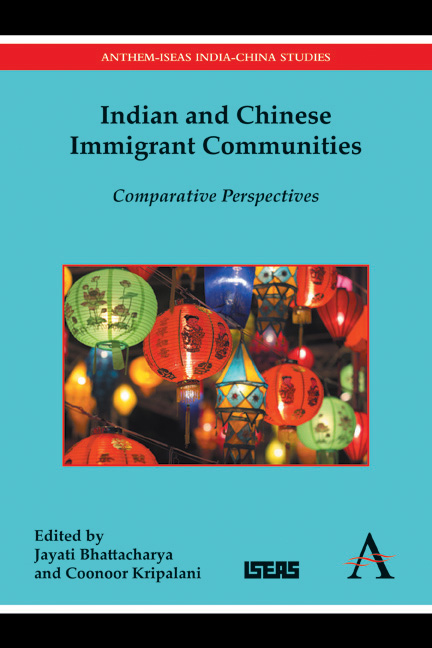Book contents
- Frontmatter
- Contents
- Foreword
- Acknowledgements
- Introduction
- Section I Historical Antecedents and the Question of Nationality
- Section II The Meeting Ground: Indians and Chinese in Southeast Asia
- Section III Indians in China and Chinese in India
- 11 Law and Its Impact on Diasporic Philanthropic Institutions: The Practices of Sinchew and the Waqs in the Straits Settlements
- 12 Indian Soldiers and Policemen in China in the Colonial Period
- 13 New Indian Migrants in Guangzhou and Its Vicinity
- 14 Who Is a Chinese-Indian? Search for the Cultural Identity of the Chinese-Indians in Kolkata, Sihui and Toronto
- Section IV Across the Globe: Indian and Chinese Diasporas
- Postscript Shifting Worlds and Changing Identities: The Reshaping of the Chinese-Indian Communities in India after the 1962 “Sino-Indian Incident”
- List of Contributors
- Index
14 - Who Is a Chinese-Indian? Search for the Cultural Identity of the Chinese-Indians in Kolkata, Sihui and Toronto
from Section III - Indians in China and Chinese in India
Published online by Cambridge University Press: 05 December 2015
- Frontmatter
- Contents
- Foreword
- Acknowledgements
- Introduction
- Section I Historical Antecedents and the Question of Nationality
- Section II The Meeting Ground: Indians and Chinese in Southeast Asia
- Section III Indians in China and Chinese in India
- 11 Law and Its Impact on Diasporic Philanthropic Institutions: The Practices of Sinchew and the Waqs in the Straits Settlements
- 12 Indian Soldiers and Policemen in China in the Colonial Period
- 13 New Indian Migrants in Guangzhou and Its Vicinity
- 14 Who Is a Chinese-Indian? Search for the Cultural Identity of the Chinese-Indians in Kolkata, Sihui and Toronto
- Section IV Across the Globe: Indian and Chinese Diasporas
- Postscript Shifting Worlds and Changing Identities: The Reshaping of the Chinese-Indian Communities in India after the 1962 “Sino-Indian Incident”
- List of Contributors
- Index
Summary
Introduction
Scholars from several disciplinary perspectives have discussed the issue of ethnic and cultural identity among “diasporic” and immigrant communities. Stuart Hall, for example, offers two ways of looking at cultural identity. “The first position,” he writes, “defines ‘cultural identity’ in terms of one, shared culture, a sort of collective ‘one true self,’ hiding inside the many other, more superficial or artificially imposed ‘selves,’ which people with a shared history and ancestry hold common.” The second definition, Hall notes, recognizes that “there are also critical points of deep and significant difference which constitute ‘what we really are’ or rather – since history has intervened – ‘what we have become.’”
This issue of defining cultural identity is relevant for examining who, in a wider diasporic context, is “Chinese” and, in a specifically Indian context, who is a “Chinese-Indian” or “Indian-Chinese”? But it should be noted, as Tan Chee-Beng points out, that there is a
distinction between cultural identity and ethnic identity. Ethnic identity refers to ethnic identification with a particular ethnic category; cultural identity refers to cultural expression. Individuals identifying with the same ethnic category may emphasize different cultural traits in expressing their ethnic identity. An approach to the study of ethnicity is to see how individuals identify themselves ethnically and then study how they express ethnic identity culturally; in other words, how people use cultural features to express ethnic identity.
During the early history of China, the region around the Yellow River Valley formed the core of Chinese civilization. It was around this area, during most part of the first millennium BCE, that the concept of a common culture, comprising shared behaviour, institutions, and beliefs, was formulated. This was the place to which Han Chinese in general trace their descent, specifically to the legendary Yellow Emperor. With the teachings of Confucius officially propagated during the Han dynasty (206 BCE–220 CE) and the standardization of the script before that, a sense of homogeneity and core Han Chinese culture took shape, and, according to Myron L. Cohen, “a unified culture” that “provided standards according to which people identified themselves as Chinese” developed.
- Type
- Chapter
- Information
- Indian and Chinese Immigrant CommunitiesComparative Perspectives, pp. 219 - 232Publisher: Anthem PressPrint publication year: 2015



